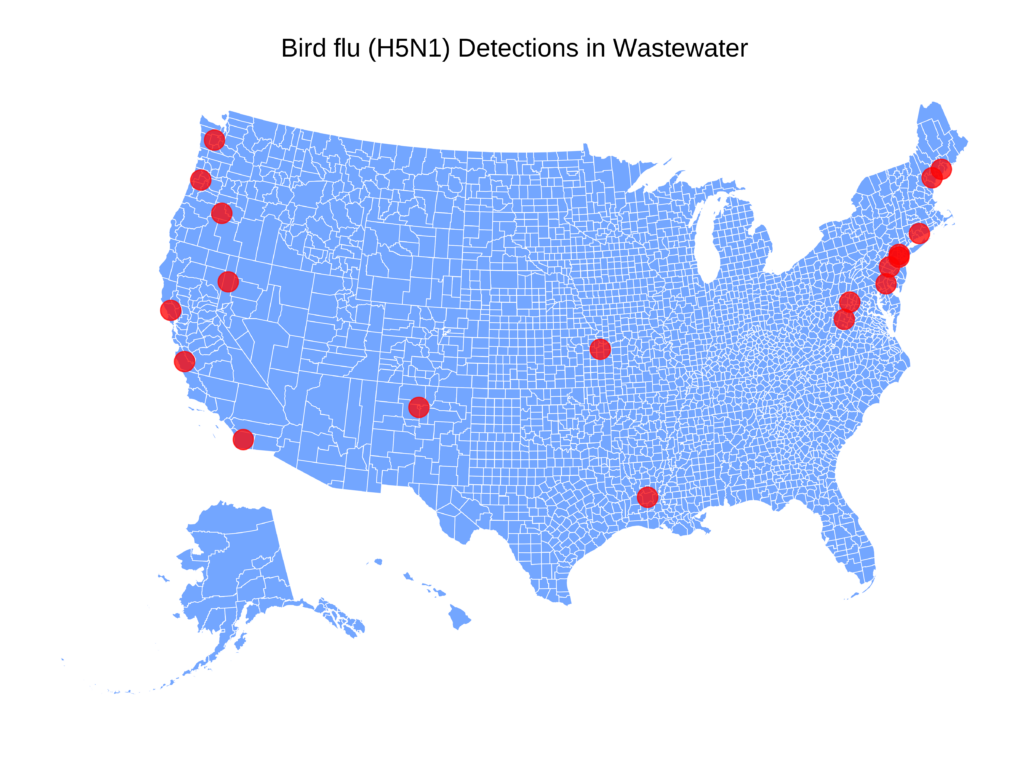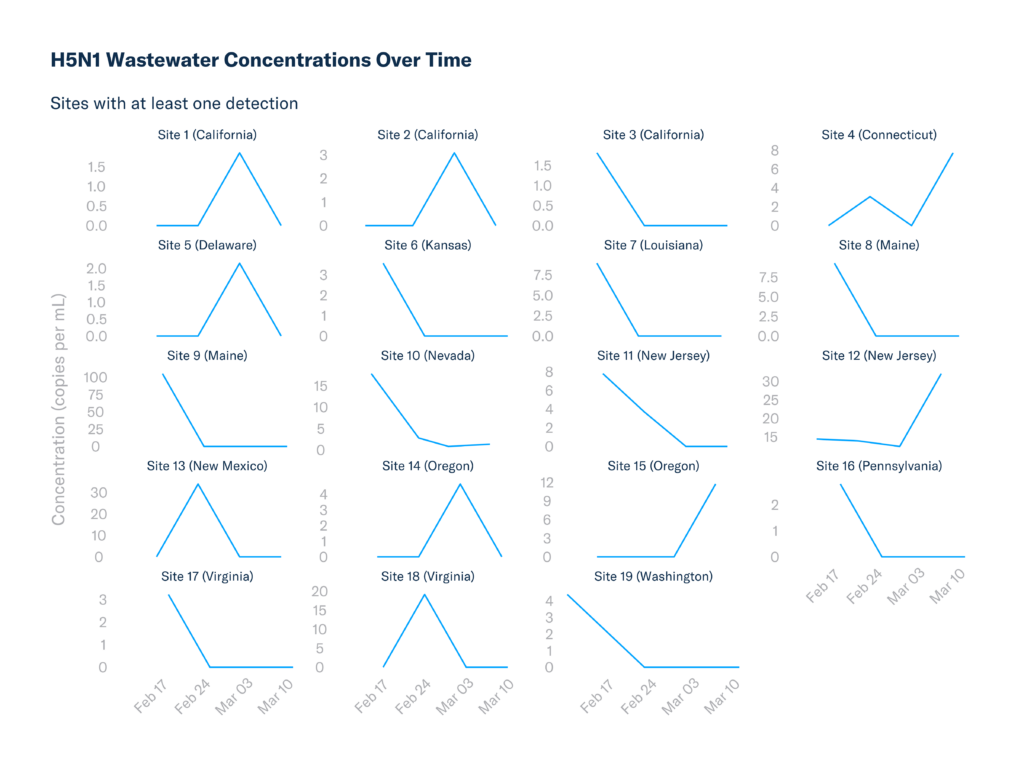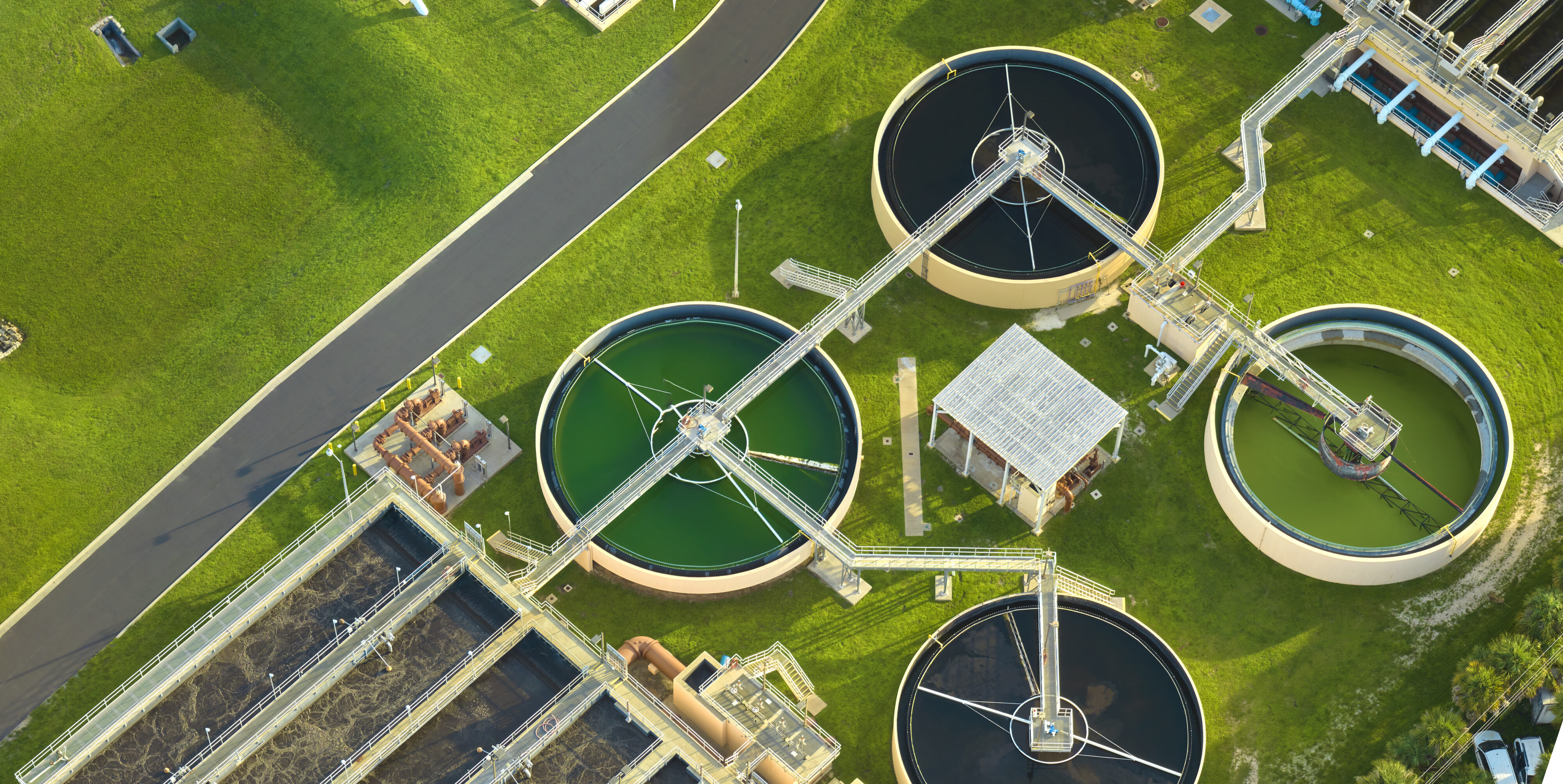
Blog
Bird Flu Is Showing Up in U.S. Wastewater—Here’s What That Means for Community Health

April 11, 2025
At Biobot, we analyze wastewater across the country for various infectious disease pathogens. Here’s what we found in our most recent tests: traces of bird flu (H5N1) popping up in wastewater samples from 13 states.
Between February and March 2025, we worked with wastewater treatment plants in 42 states to see whether the highly pathogenic bird flu (H5N1) was circulating. The results? We detected bird flu in 19 counties across 13 states—areas that are home to over 9 million people. Once again, wastewater has shown its power as an early warning signal for concerning pathogens like bird flu.

We tested for H5 influenza virus genetic material using highly sensitive PCR assays. Our methods ensure that we can directly compare wastewater results from one city to another over time, which is crucial for identifying hot spots.
It’s important to note that these detections don’t necessarily mean there’s widespread bird flu transmission—detections were still only sporadic. In most places (79%), we only detected the virus once during the sample period. Some sites, though, like in Nevada and New Jersey, had detections in all samples during the study. This could point towards more active circulation in those regions.

Where is the virus coming from? Wastewater can’t tell us who or what is shedding bird flu—it could be wild birds, livestock, humans, even contaminated materials from farms or milk. But what it does tell us is that the virus is out there, and that’s something we should be paying attention to.
While bird flu mainly affects wild birds, poultry, and cattle, it can infect humans—especially those who work closely with animals. Since it began circulating in the U.S., more than 70 people have become infected, and one has died. Most human infections were from close contact with poultry or livestock. With every animal-to-human spillover event, the chance of bird flu mutating to be more infectious increases. Early detection, like through wastewater, can help communities prepare, communicate, and allocate resources accordingly.
Monitoring wastewater for bird flu is a piece of the larger health surveillance system, which also includes tracking the health of wild birds, poultry, and livestock. Animal testing often relies on individual testing and voluntary reporting, which means infections could slip through the cracks. Wastewater monitoring, on the other hand, doesn’t rely on individually testing each animal (or human for that matter), filling crucial gaps and giving us a big-picture view. In fact, during our monitoring period, we detected bird flu in wastewater in Virginia—even though standard testing in poultry and cattle didn’t catch it.
Continued wastewater monitoring for bird flu can provide an early warning system for any changes in the virus’s activity. Seeing more locations with consistently high bird flu concentrations in wastewater, for example, would signal that something is shifting. For now, Biobot’s wastewater findings signal that bird flu is out there circulating, with concerns mounting as it continues to spread through poultry and cattle.
| State | H5 Biobot wastewater detection | Poultry detection during time | Livestock detection during time |
| California | Yes | Yes | Yes |
| Connecticut | Yes | Yes | No |
| Delaware | Yes | Yes | No |
| Kansas | Yes | Yes | No |
| Louisiana | Yes | Yes | No |
| Maine | Yes | Yes | No |
| Nevada | Yes | Yes | Yes |
| New Jersey | Yes | Yes | No |
| New Mexico | Yes | Yes | No |
| Oregon | Yes | Yes | No |
| Pennsylvania | Yes | Yes | No |
| Virginia | Yes | No | No | Washington | Yes | Yes | No |
So, what’s next? Biobot is continuing to offer and expand H5N1 (bird flu) wastewater analysis nationwide, along with monitoring for other high-priority influenza strains (H1, H3, 2009 pandemic H1N1, seasonal H1N1, and H3N1). With just a few tablespoons of water, you can gain powerful insights into what’s happening across your entire population.
🧪 Want to learn how wastewater monitoring can help protect your community?
📩 Reach out to us today at hello@biobot.io or visit www.biobot.io to get started.
Let’s work together to keep our communities informed, prepared, and protected.
Written by Marisa Donnelly, PhD
Dr. Marisa Donnelly, an infectious disease and public health epidemiologist at Biobot, formerly served as a CDC Epidemic Intelligence Service Officer and as a Lieutenant in the US Public Health Service, stationed at the California Department of Public Health. Her areas of expertise include emerging health threats, outbreak investigation, risk communication, and public health surveillance.





